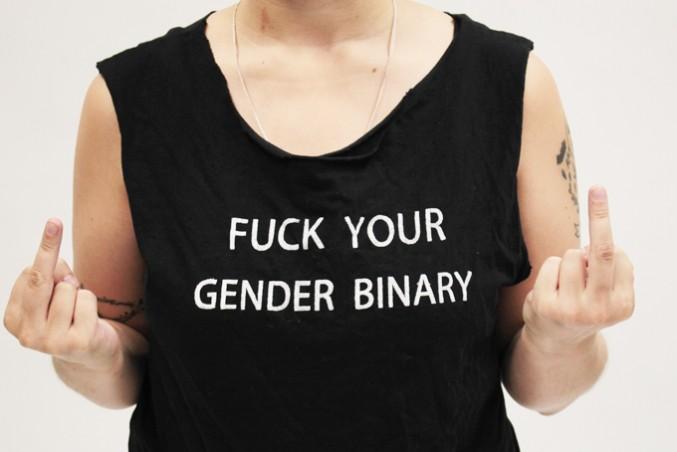By Riley Wood and Sidney Drmay
Redundancies in Ryerson’s gender marker specifications on administrative forms have many trans students confused about why this information is required by the university.
The current system has also caused some transgender students issues with their OSAP applications because they must indicate a gender that doesn’t match their legal documents. Non-binary and genderfluid students are left out completely.
RyePride coordinator and Trans Collective member Camryn Harlick has struggled with gender markers since they applied to Ryerson.
“I remember having the gender markers and feeling like I was going into an institution where I was already being unrepresented,” Harlick said. “Before even coming to school, that was a really shitty feeling to have.”
Once settled at Ryerson, students are able to submit a Personal Data Change form that allows them to change their gender markers without changing their name. The form gives the options of male, female or other/unreported.
Other post-secondary institutions, such as Carleton, Guelph and George Brown, do not require gender information.
Recently, Ontario made steps towards removing gender markers from identification cards. Similarly, Ryerson does not have markers on OneCards. This raises an important question: Why even ask students their gender to begin with?
In an e-mail, Ryerson registrar Charmaine Hack said that gender “is used in legislated reporting and although the Ministry of Advanced Education and Skills Development is reviewing its requirements around gender, this is still a reporting element.”
Hack also noted that the university uses gender information in initiatives to encourage women to join science and engineering programs.
But these initiatives do not account for trans and nonbinary students, who are forced to misidentify and face what is, for many, an uncomfortable reminder of their assigned gender.
Harlick feels that although the information is important for stats, the school is overlooking other important data.
“You’re already being put as ‘other’ and to me that says ‘we don’t have services for you and we don’t know how we can help you,’” Harlick said. “Not knowing what the student population looks like means that you can’t offer correct support.”
Universities are trying to be more inclusive in their admissions processes. According to Hack, the gender selections will have a new optional field for Fall 2017. A third option, “another gender identity,” will give students a space to submit their own identity.
When this is implimented, it will be great news for incoming trans and nonbinary students. But those currently attending Ryerson are stuck in limbo.
“It makes me feel invalid as a human being. This makes my perception of gender and my perception of existence feel invalid, like, ‘oh it’s not worth knowing … you can be an ‘other’,” Harlick said.










Leave a Reply